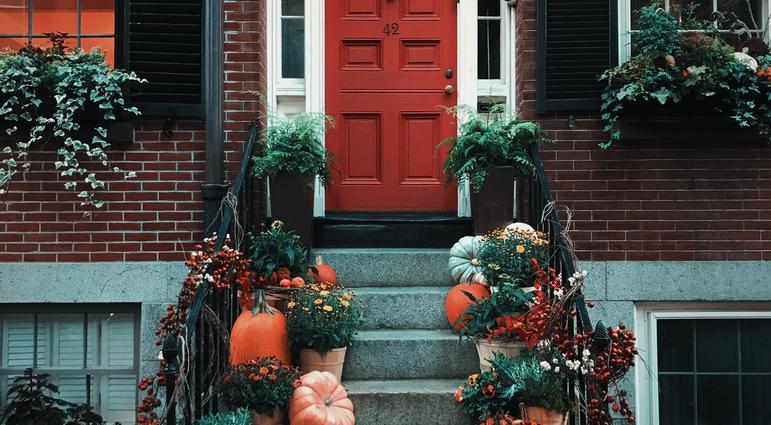How to Make a Succulent-Topped Pumpkin

List of Materials:
- Pumpkin – one that will sit flat and also has a flattened top such as a “Cinderella”
- Wipes and paper towels
- Butcher paper or newspaper for work area
- Pruners for stem and small clippers or scissors for succulents
- Spray adhesive, optional
- Floral pins, optional
- Tacky glue (Aleene’s or similar) or glue gun and stick
- Dry long fiber sphagnum moss (other mosses may work too)
- Succulents and cuttings – a variety
- Other natural objects for fillers (bark, feathers, pussy willow, lichen, reindeer moss, seed pods, dried/fresh berries, nuts etc.)
- Spray bottle and water (for later)
Directions:
- Shorten the pumpkin’s stem, taking care not to wound the pumpkin. An intact pumpkin will last much longer.
- Use wipes and paper towels to clean any dirt off the pumpkin, and then dry it.
- Spray a coat of adhesive on the top of the pumpkin, or use tacky glue or a glue gun, whichever you prefer to work with.
- Firmly press dry moss onto the glue to make a layer about ½ to 1” thick, maybe mounding the moss a little more in the center. You may need to add additional glue to some areas. Some moss can trail down the sides, so the pumpkin doesn’t look like it has a “bowl haircut”!
- While the glue cools or dries a bit, design your arrangement:
- Choose the succulents and fillers you’d like to use. Clip off cuttings and twist off a few bottom leaves to create a short stem. Leave a short stub on rosette cuttings and remove any dead leaves from the base. These fresh cuttings should not receive any moisture for several days so a protective callus can form. For small succulents with few roots you may want to just clean the soil off the roots and plant it entire. Having an arrangement with both cuttings and rooted plants can be a little tricky to water, though, as cuttings need more frequent watering than rooted plants.
- Lay out your succulent design to decide how you want to put it together.
- Glue your arrangement onto the moss:
- A glue gun will burn the area where glue is applied on the succulent but has no ill effect on the plant as a whole. Applying glue to the side of the stem leaves plenty of areas for roots to grow. Don’t use a leaf to adhere the cutting since if it dies/falls off, the whole cutting will fall off. Starting with the largest cutting(s), secure them with glue gun or tacky glue a little off-center. You may need to add some shorter ones initially to stabilize a tall one. Gently press cuttings against the pumpkin base as you work. Use a variety of colors and textures. Adding white always makes colors pop and include some dark for contrast. Continue securing pieces and artifacts one at a time, from large to small, fitting them close together. Arrange the smaller, outer ones facing outward to create a mounding effect of the whole arrangement. Tuck trailers in last or add them initially if they are very long.
- Locate your arrangement in bright, indirect light either indoors or on a sheltered porch. Protect from harsh sun, excessive heat and rain. Most of these succulents should stay above 40° to keep looking good. Wait a few days before misting the moss (a little longer for fresh cuttings that weren’t callused when you made the arrangement). Spray as well as you can on the moss, not directly over the succulents. Echeverias in particular will rot if water stands in their rosettes. Spray when the moss has dried, about weekly. Follow by tilting the pumpkin so water doesn’t pool around the stem.
- Your arrangement should last at least several weeks, if not several months. When the pumpkin begins to deteriorate, replant the succulents in a fast-draining soil mix in a container with a drainage hole. If succulents have begun rooting into the pumpkin, you can slice off the pumpkin top and plant it directly onto the soil. Some cuttings may not survive, but this is a great way to learn about succulent propagation and care of various types.
-
128 Raleigh St, NC 27540